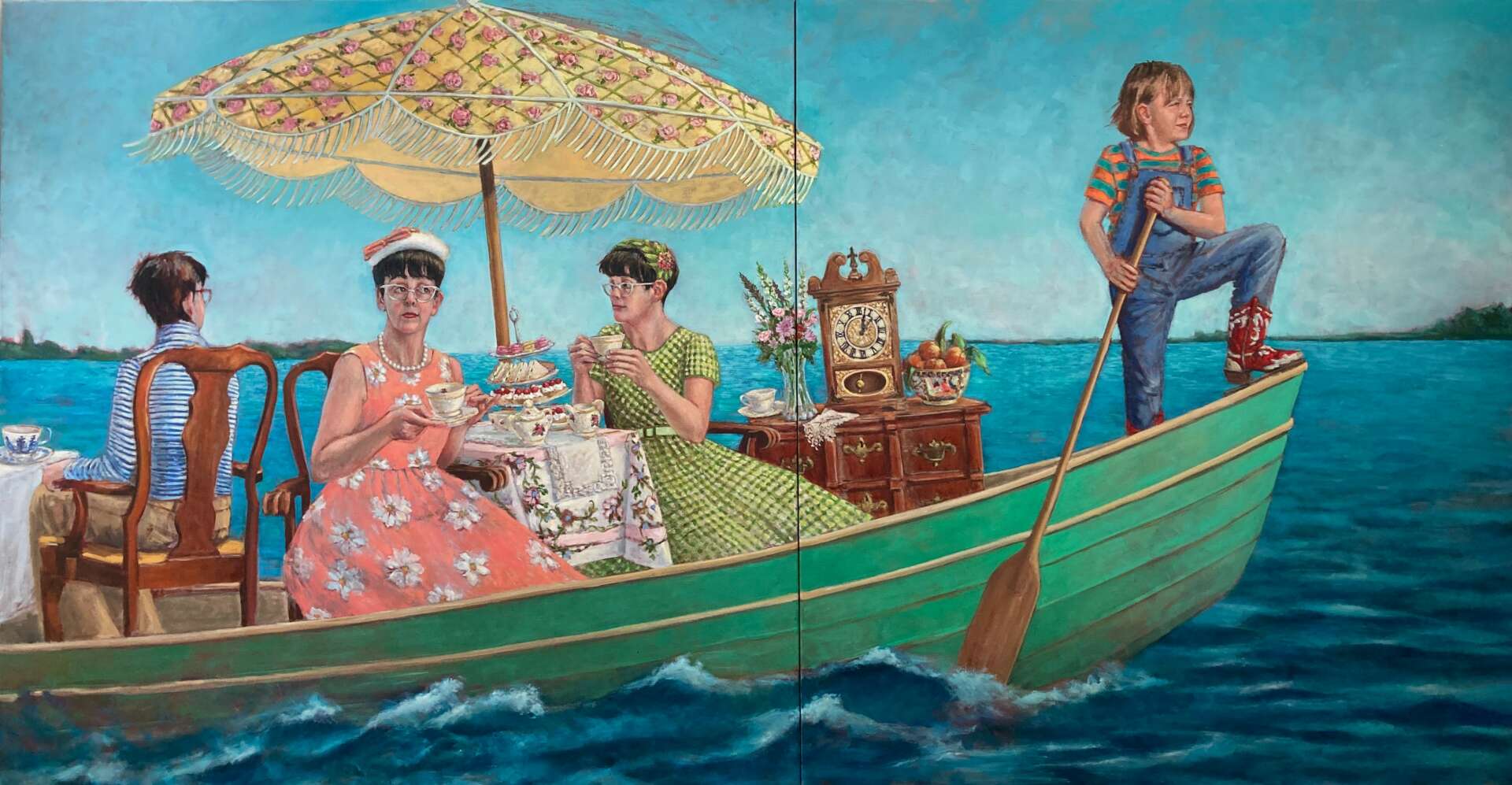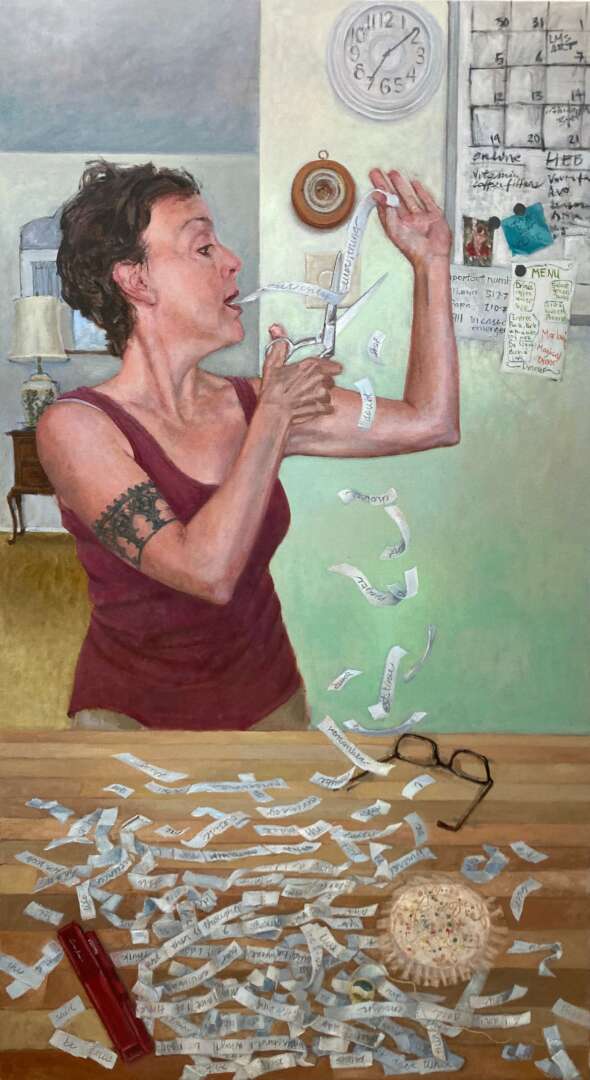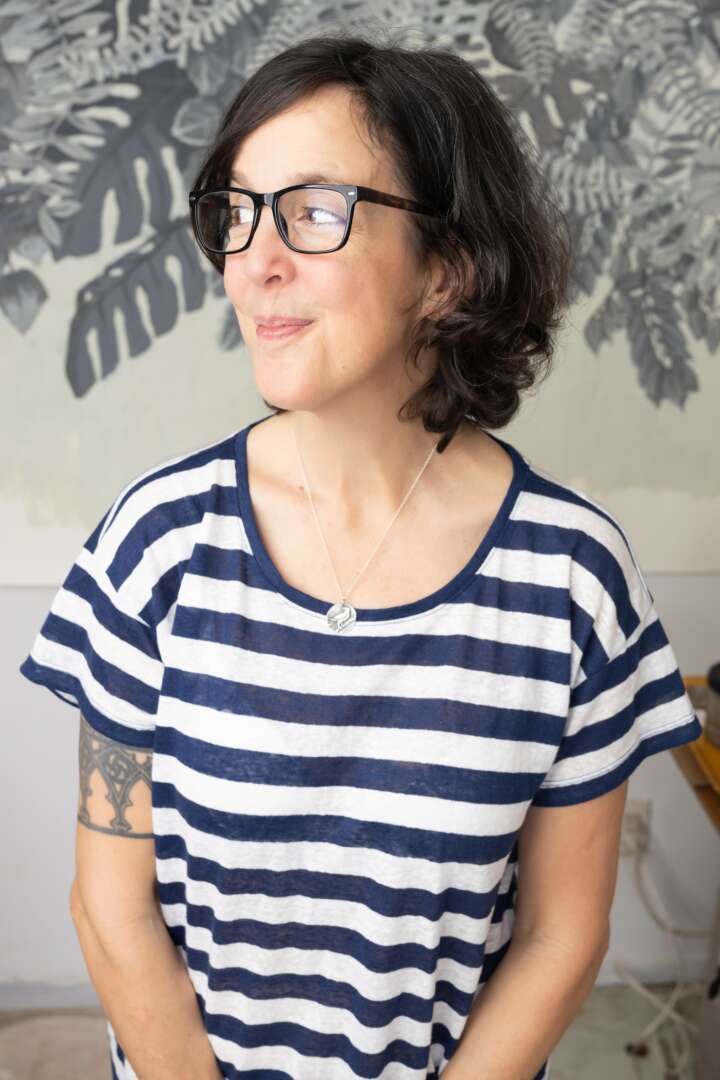We’re excited to introduce you to the always interesting and insightful Sara Lee Hughes. We hope you’ll enjoy our conversation with Sara Lee below.
Sara Lee, appreciate you joining us today. Are you happier as a creative? Do you sometimes think about what it would be like to just have a regular job? Can you talk to us about how you think through these emotions?
Being an artist is intrinsic and runs to my core. I am happiest when making something whether it be a painting, a theater prop, a demo for my students. However, I think it goes beyond being an artist. It is creative problem solving that is at the root of my happiness and my joy. When I am not painting or working on some project where outside -of -the- box thinking or problem solving is not needed, it is then that I find myself frustrated and bored, not happy.
I am happy being an artist/creative. Like most jobs there are a variety of emotions that come with being an artist besides happiness; joy, frustration, anger and it takes effort to balance them. I strive for finding the joy in my work where ever it may be, on the canvas, in my studio, in the classroom, in my student’s enthusiasm and in my community.
I am happy because I know that making art is my purpose in life.


Great, appreciate you sharing that with us. Before we ask you to share more of your insights, can you take a moment to introduce yourself and how you got to where you are today to our readers.
My journey into the art world began with a love for making things. I don’t remember painting a lot as a child. I remember really enjoying all of the creative projects in elementary and junior high: weaving, paper mache, sculpture, pottery and making props for plays.
It was not until I found myself painting theater backdrops in college that I discovered a love for painting. I went to college to pursue an acting degree but quickly changed my degree plan to theater design. Costume, Set and Lighting design classes introduced me to figure drawing, architecture and Art History. Theater was my gateway into the art world.
After college I moved to Philadelphia. I worked as a scenic painter until discovering the Pennsylvania Academy of Fine Arts. PAFA offered a traditional education in painting, drawing and printmaking. I wanted to improve my skills in order to develop my craft as a draftsman and a painter. I applied with a portfolio of drawings made up of self portraits and eggs on fabric. I was accepted and I took advantage of all that the Academy had to offer.
My creative practice has evolved over years of adapting to my living spaces, working a variety of creative jobs and seeking out opportunities that would nurture my work and experience as an artist. I consider myself a full time artist although I do not work in my studio everyday. My practice continues to evolve as I adapt to balancing the demands of family, teaching and collaborating with artist friends to nurture the art community where I live.
My paintings are representational narratives influenced by my growing up in Texas during the 1970’s and 80’s with divorced parents.
They are created from moments, memories and ideas that highlight my journey navigating the differences between my gay father, my straight mother, the socio-cultural political norms of the era in which they were raised and the socio-cultural political norms of my own generation.
The paintings begin as an abstract idea or thought. I will often turn to southern colloquialisms heard in my childhood to help access imagery in conveying the abstract idea or thought.
My work relies heavily on my theater experience in acting and design. I cast myself as the characters. The scenes are composed with attention to direction, costume, lighting and set design. I use metaphors frequently and I will also self reference my work in order to strengthen the meaning of a motif. I exaggerate the familiar and make it improbable. Pop culture will often provide an element of humor. The sense of nostalgia and familiarity is created through my palette, inspired by vintage magazine ads of the 1940’s, 50’s and 70’s.
Cumulatively these elements nurture a connection between the narrative and the audience. My intention is to create paintings that are humorous and familiar, work that people identify behaviors and values that derive from unquestioned traditions and stereotypes. They begin to question those behaviors and stereotypes, in order to change them.
Currently I am exploring the attempt, by so many of us, at trying to strike a balance between the need to be our truest selves and the tether of antiquated social mores, traditions and stereotypes, and how this experience fits into our country’s broader social and cultural heritage.


Can you share a story from your journey that illustrates your resilience?
For myself, leaning into the challenges is the best way to nurture your resilience. I did not come to this over night but over years of being flexible in order to have a full time art practice that suited my living/working situation. As an artist, learning how to be resilient is an evolving process accompanied with the understanding that to be an artist you must be in it for the long game. You must be willing to try and fail. You must have faith in your work and yourself.
For myself, balancing motherhood with being an artist has presented the greatest challenges. One of them being time to get into the studio in order to create work. After I had my daughter I brainstormed different ways of finding time to get back into the studio. Home with a newborn, I began with five minute projects, dictated by her sleep schedule and aided by the kitchen timer.
One of my favorite solutions to finding time to work when she was a toddler was to create what we called The Morning Table. Several mornings a week I would place a variety of art supplies around our kitchen table. She would make her way around the table printing, crafting, beading and painting while I painted at one end of the table. This afforded me, at the minimum, an hour of creative time. Over time I would offer more challenging projects. This kind of problem solving has made me very resilient and I would add flexible. It has been in preparation for the schedule that my family now has with our daughter headed into adolescence and going to school in Austin.
Learning and unlearning are both critical parts of growth – can you share a story of a time when you had to unlearn a lesson?
For myself, when it comes to lessons, it is more often a case of re-learning rather than un-learning. There is one lesson that comes to mind because it is one that reoccurs every few years. It’s quite simple- Do the work and everything else will fall into place after. My pattern can be: do the work, accolades come, get stuck on the accolades, the marketing, the growing of my fine art business. This all removes me from doing the work. Making my best work is what is most important. The artwork is what creates the interest that makes the exhibition, the commission, the business. For myself, getting sidetracked by where I should be, what my business should be and/or look like creates a huge traffic jam for me, EVERY TIME. I do feel that my participation in social media is part to blame. It is hard not to compare yourself to other artists and it is equally hard not to want to model your life, your studio practice, etc. like other artists you may admire on social media. I have to remind myself when I get sidetracked by the “should’s” that I need to get back in the studio, make the best work that I know possible and everything else will follow.
Contact Info:
- Website: https://www.saraleehughes.com/
- Instagram: https://www.instagram.com/sara.lee.hughes/
Image Credits
Headshot by Whitney Dionizio of The Photo Studio, Lockhart, TX


